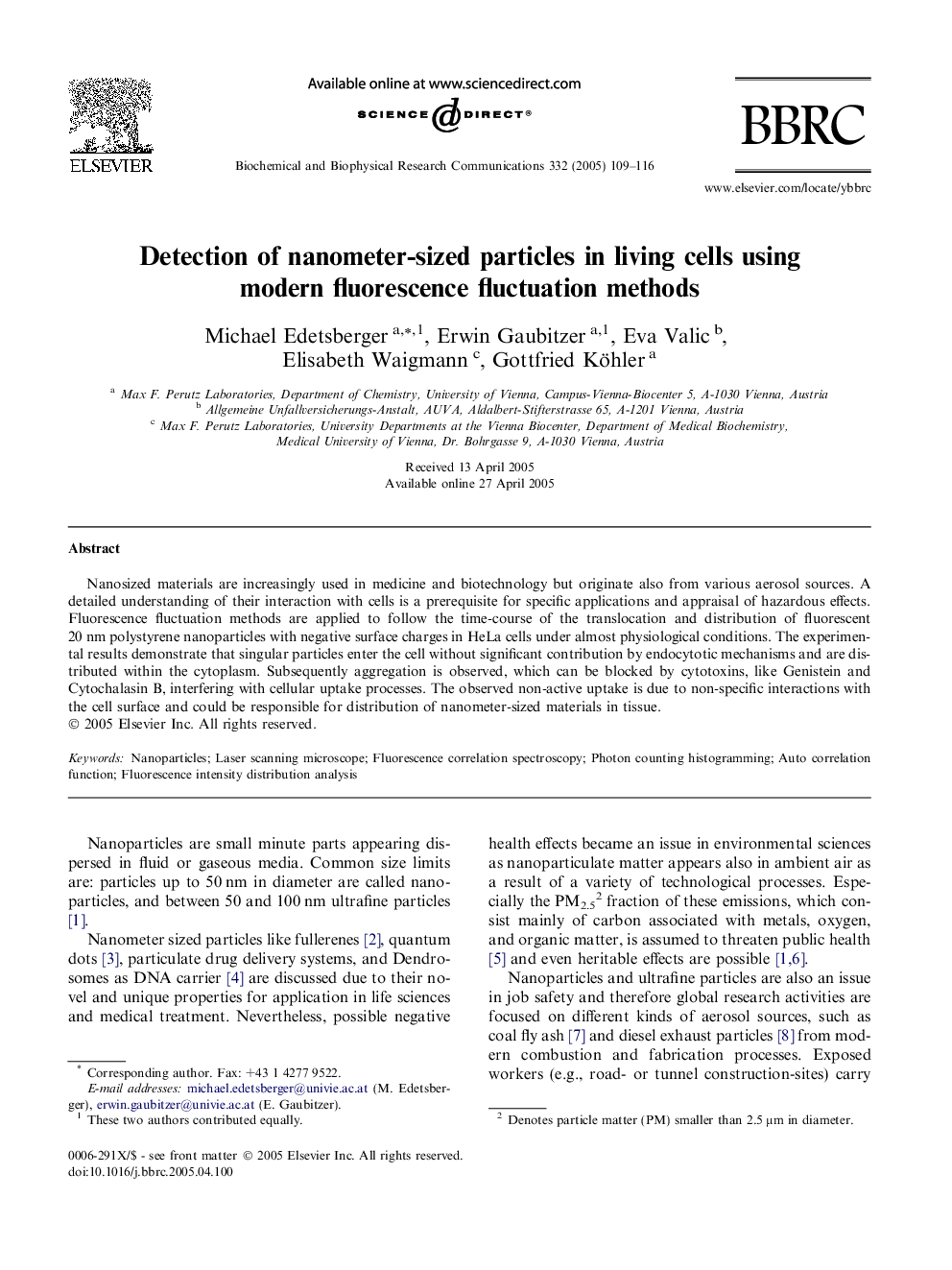| Article ID | Journal | Published Year | Pages | File Type |
|---|---|---|---|---|
| 10769883 | Biochemical and Biophysical Research Communications | 2005 | 8 Pages |
Abstract
Nanosized materials are increasingly used in medicine and biotechnology but originate also from various aerosol sources. A detailed understanding of their interaction with cells is a prerequisite for specific applications and appraisal of hazardous effects. Fluorescence fluctuation methods are applied to follow the time-course of the translocation and distribution of fluorescent 20Â nm polystyrene nanoparticles with negative surface charges in HeLa cells under almost physiological conditions. The experimental results demonstrate that singular particles enter the cell without significant contribution by endocytotic mechanisms and are distributed within the cytoplasm. Subsequently aggregation is observed, which can be blocked by cytotoxins, like Genistein and Cytochalasin B, interfering with cellular uptake processes. The observed non-active uptake is due to non-specific interactions with the cell surface and could be responsible for distribution of nanometer-sized materials in tissue.
Keywords
Related Topics
Life Sciences
Biochemistry, Genetics and Molecular Biology
Biochemistry
Authors
Michael Edetsberger, Erwin Gaubitzer, Eva Valic, Elisabeth Waigmann, Gottfried Köhler,
